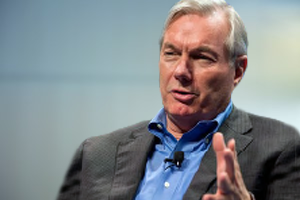Globally recognized epidemiologist Dr. Michael T. Osterholm is Regents Professor at the University of Minnesota School of Public Health and founder and director of the Center for Infectious Disease Research and Policy (CIDRAP) at the University of Minnesota. He has long been a knowledgeable and influential voice in the highly complex field of public health. He recently sat down with Dr. Daniel D. Zimmerman, Senior Vice President and Chief Science Advisor, RGA, and co-editor, ReFlections, to offer his perspective on several key issues impacting the world and our industry.
What is (are) the greatest or most important lesson(s) we have learned from the COVID-19 pandemic?
I think there are two. The first is that no matter what technology is brought to the table, if the public doesn’t trust it or buy into it, we’re really challenged. We’re seeing this with vaccines and drug therapies. We have to understand the power of science is greatly limited if we can’t get the public to use the technology. The second is the importance and power of trust. We live in a difficult world – one in which trust in science and public health has lessened. The old ways, of providing recommendations and then the public following through, are seriously compromised, and this new lack of trust in public health will be a major challenge moving forward.
Are we now in a better position to deal with future pandemics?
Unfortunately, I think we’re in worse shape. Not only because there is such a high level of distrust of public health, but also, we never conducted a lessons-learned study to prepare for the future. We will need new and additional technologies for a future pandemic. Current vaccines are good, but not great. Work is proceeding on that research but still, little investment is going into it. Depending on political outcomes in the U.S., there could be a 50% reduction in CDC and NIH budgets as well as efforts to sideline those leading future pandemic responses. I can’t image what the impact of these actions would be. Additionally, disease surveillance may be more compromised now than at any time in the past. Despite wastewater surveillance technology, we are still not quite sure how to interpret those results, plus funds are being cut to support this technology. We have also seen the gutting of public health institutions and a significant number of people have left those institutions. Globally, we are also seeing funding for surveillance being cut.
What is currently keeping you up at night?
I worry based on this week, this year, and this decade. They all have different implications. As mentioned, I don’t believe we’re at all prepared for the next pandemic. Our group has been very actively involved in developing influenza and coronavirus vaccine roadmaps and we’re making progress, but we have a long way to go. We don’t yet have correlative protection testing in the lab for these vaccines. My immediate near-future worry is the potential for funding cuts to our public health institutions such as the CDC and NIH. I also worry about the elimination of PEPFAR (President’s Emergency Plan for AIDS Relief). This worry is real.
What is the current state of technology when it comes to the development of a universal flu vaccine?
The technology is clearly moving forward. Part of the challenge we have right now is that Operation Warp Speed (to develop COVID vaccines) gave people the perception that in one year we can come up with magic. mRNA vaccines were already in development for two decades. All the money in the world can’t accelerate development. Also, we are not seeing significant private sector investing at this point. Thus, it will mostly be supported by government investment.
We are still five to ten years from having these game-changing vaccines that would provide broad protection with efficacy over an extended period of time.
How concerned should we be with the current global avian influenza outbreak? Is its risk of jumping to humans still low?
I have been involved with H5N1 since the late 1990s in Hong Kong. At that time, it posed substantial risk to humans, but we’ve seen it change over time. In 2015 it spread to Africa, the Nile River valley, and we saw a concerning level of human transmission. However, the receptor sites on the current circulating virus have changed substantially. This is why the WHO and CDC list it as a low risk for humans, but high risk for birds. I feel more comfortable that we are at lower risk for humans at this point, but clearly the impact on animal species around the world will be dramatic.
To what extent will climate change drive changes in the patterns of transmission and distribution of infectious diseases?
I think it’s going be huge, in two areas in particular. One is the availability of safe, potable water for people to drink around the world. Climate change is affecting water availability. Glacier and snowmelt are rapidly being depleted as well as ground water. The other is on vector-borne diseases. For example, temperature and precipitation patterns are changing to favor certain mosquito species in areas that never had this as an issue. In parts of South America, we are also seeing mosquito habitat gaining almost 2,000 feet in elevation.





